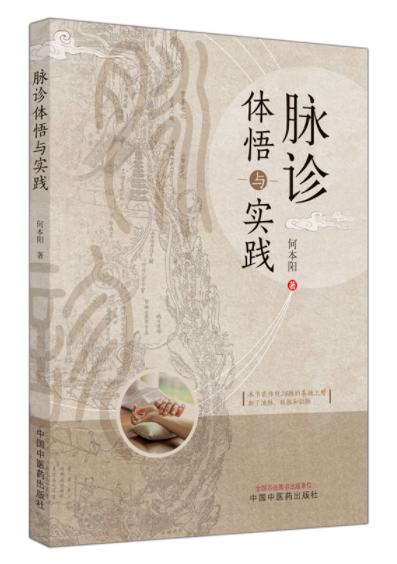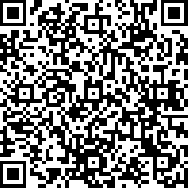Editor’s Note
The study of pulse diagnosis is a crucial component of Traditional Chinese Medicine (TCM) and has always been highly regarded, with the saying “to know by feeling is called skill.” However, learning to differentiate pulses is not a simple task. From the position and length of the pulse to its tension and smoothness, beginners often find it challenging to have a clear understanding. Director He Benyang specializes in pulse diagnosis, uses flexible medication, and achieves rapid results. Below, we will learn about the identification and treatment of the floating pulse through a medical case.
Characteristics of the Floating Pulse
It is easily felt with light pressure, floating on the surface of the skin. When lifted, it feels smooth and flowing; when pressed, it slightly decreases but does not feel empty. Ancients described this pulse as “like following the elm pods,” “hairy,” “floating,” “meat rising,” and “like wood floating on water.”
The floating pulse is one of the key pulses emphasized by physicians throughout history, characterized by “more when lifted, less when pressed.” This means it is very obvious when lightly taken, somewhat less so when moderately taken, and even less when deeply taken. This is a relatively standard floating pulse, but in clinical practice, such standard floating pulses are not very common; more often, we encounter non-standard floating pulses.
The changes in the floating pulse from “less when lifted” to “more when pressed” can be roughly divided into three categories:
① Floating: It is obvious when lightly taken, insufficient when moderately taken, and even more insufficient when deeply taken, which is the classic floating pulse described above.
② Slightly Floating: This is close to the standard floating pulse, just slightly less in degree. The floating pulse should be relatively obvious, and the moderate pulse should also be relatively obvious, but the deep pulse is insufficient, unlike the standard floating pulse where the floating pulse is very obvious, the moderate pulse is not very obvious, and the deep pulse is even less so.
③ Slightly Slightly Floating: In this case, a bit more pressure is needed to feel it clearly. If the floating pulse is not very obvious, but it can be felt, and the moderate pulse can also be felt, while the deep pulse is insufficient, then it is slightly slightly floating.

Components and Analysis of the Floating Pulse
The floating pulse can be a normal pulse or a pathological pulse, and it is one of the most common pulses in clinical practice. The floating pulse only reflects changes in pulse position, characterized by “the pulse position being shallow.” Apart from this, it does not include other factors and is classified as a single-factor pulse.
The core of determining whether it is a floating pulse in clinical practice lies in: The pulse is very obvious when lightly taken.
The floating pulse is one of the common key pulses; it has independent significance as a single-factor pulse and can also serve as a condition for other pulse types, such as the soft pulse, and can be combined with other pulses, such as floating slippery or floating rapid.

Principles of the Floating Pulse and Clinical Diagnostic Significance
External pathogenic factors invade the surface of the body, while the body’s righteous qi fights against the external evil; the righteous and evil qi clash at the surface; internal pathogenic factors are expelled by the righteous qi, intending to emerge from the skin; deficiency of yin leads to the outward escape of yang qi, obstructed at the surface; internal wind evil stirs, and the qi and blood resist, tending towards the surface. In these four situations, the disease location is concentrated at the surface, hence the appearance of the “floating” pulse.
01. External invasion of the six excess pathogenic factors
Floating and weak indicates surface deficiency, while floating and strong indicates surface excess. Common pulse combinations: floating tight (without sweating) indicates cold damage, floating slow (with sweating) indicates wind stroke, floating rapid indicates wind-heat, floating slippery indicates wind-phlegm, and floating weak indicates summer heat. For example, the “Treatise on Cold Damage” states: “When the disease is at the Taiyang level, the pulse is floating, with a strong pain in the head and neck, and aversion to cold.” It also states: “If the pulse is floating, the disease is at the surface, and sweating can be induced; it is advisable to use Mahuang Decoction.”
02. Internal pathogenic factors wanting to resolve from the outside
For example, in the “Treatise on Cold Damage,” Article 327 states: “In the case of Jueyin wind stroke, a weak floating pulse indicates a desire to recover, while a non-floating pulse indicates no recovery.” This is due to the Jueyin pathogenic factor emerging from the surface.
03. Yin blood deficiency internally, yang qi floating towards the surface
For example, the “Essentials from the Golden Chamber” states: “If a man has a pale complexion, it indicates thirst and loss of blood, sudden shortness of breath, and a floating pulse indicates internal deficiency.” This is due to internal yin deficiency and the outward scattering of yang, resulting in a floating pulse. It also states: “If the pulse is floating, the eyes are yellow and bleeding has not stopped; when the yellow disappears, the eyes become clear, indicating that the bleeding has stopped.” This means that when blood is lost, yin is depleted, and yang qi has no support, thus appearing as a floating pulse.

Clinical Application Case Study
Li, a 62-year-old female, first diagnosed on October 2, 2014.
Main Symptoms: For over three years, she could only sleep for about two hours each night and could not fall back asleep after waking. Her tongue was pale red with a thick white coating, and she had no other complaints. She had previously taken Western sedatives and had undergone multiple TCM treatments outside the hospital with poor results.
Pulse Diagnosis: The left cun and chi pulses were floating and thin.
Pulse Analysis: The left cun pulse corresponds to the heart, and the left chi corresponds to the kidney. The floating and thin pulse indicates deficiency of heart and kidney yin, with empty heat disturbing the spirit, leading to a lack of communication between the heart and kidney. The pulse is slippery, indicating heat and phlegm. Overall, the floating, thin, and slippery pulse indicates phlegm-heat disturbing the interior and the lack of communication between the heart and kidney.
Treatment Method: Nourish yin, clear heat, transform phlegm, and connect the heart and kidney.
Prescription: Sheng Mai Decoction combined with Wen Dan Decoction, adjusted as needed.
Ingredients: 10g of Sheng Di Huang (Rehmannia Root), 12g of Mai Dong (Ophiopogon), 6g of Wu Wei Zi (Schisandra), 10g of Zhu Ru (Bamboo Shavings), 6g of Chao Zhi Shi (Bitter Orange), 12g of Chen Pi (Tangerine Peel), 12g of Ban Xia (Pinellia), 12g of Fu Shen (Poria), 6g of Shi Chang Pu (Acorus), and 3g of Zhi Gan Cao (Honey-fried Licorice). 7 doses, decocted in water, 1 dose per day.Follow-up on October 10, 2014: After taking the above formula, she was able to sleep for about 6 hours. The formula was effective, and she was given another 7 doses of the same prescription.

Commentary
This case illustrates a floating pulse primarily indicating deficiency. Generally, floating pulses are often seen in surface conditions, but in this patient, the floating pulse appeared in a case of internal deficiency, indicating that the floating pulse can signify both surface and internal conditions. Whenever an internal condition presents with a floating pulse, the location of the pulse indicates which organ’s deficiency it corresponds to. For example, a floating pulse at the right chi often indicates kidney deficiency. In clinical differentiation, only by considering all four diagnostic methods can accurate differentiation be achieved, and treatment can be correctly administered. If one only recognizes the floating pulse as indicative of surface conditions and uses exterior-releasing sweating herbs, it may lead to excessive sweating, harming the righteous qi or resulting in adverse conditions.
Book Recommendations


“Understanding and Practicing Pulse Diagnosis”
Click on the cover to enter the Yueyi Home TCM Bookstore to purchase.
Scan to read for free.
This book is authored by Professor He Benyang, who has studied under many renowned physicians in China and specializes in using classical formulas to treat gynecological diseases, digestive system diseases, and respiratory system diseases. He has deep research on some difficult and complicated diseases, especially in the study of TCM pulse diagnosis. This book is based on over 200,000 verified cases. The author has added the turbid pulse, vigorous pulse, and strong pulse to the traditional 28 pulse types. The book is divided into upper and lower sections and an appendix. The upper section introduces pulse diagnosis training, pulse diagnosis and differentiation, and changes in pulse patterns and qi dynamics. The lower section presents 31 types of pulse experiences, each followed by clinical case studies and summary comments. The appendix selects ancient and modern pulse literature to assist readers in understanding and mastering pulse patterns.
❖This article is for knowledge sharing only and does not constitute a recommendation or promotion of any medication or treatment. It cannot replace professional medical advice. For any medical needs, please consult and contact a legitimate medical institution.
Previous Recommendations
Treatment for “Diarrhea” – Remember this formula
90% of hair loss is due to this mistake
Eating figs this way can prevent coronary heart disease and help stabilize blood pressure and blood sugar
Copyright Statement
Some content of this article is selected from “Understanding and Practicing Pulse Diagnosis” (published by China Traditional Chinese Medicine Press, authored by He Benyang), and the final interpretation rights belong to the original author. Published by Yue Reading TCM (WeChat ID: ydzhongyi), Cover and images in the text are sourced from Shetu Network, copyright belongs to the original author. If there is any infringement, please contact for deletion. Unauthorized reproduction is prohibited!
✦ Editor: Li Wenbo Lei Chang
✦ Review: Liu Zhe
✦ Typesetting: Hu Jialin Guo Dongshan
✦ For reprints, submissions, collaborations, and bulk book purchases: 17701086692 (WeChat ID)
Click “Read the Original” to purchase the recommended books in this article Share
Share Collect
Collect Click
Click View
View

